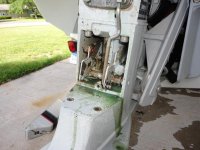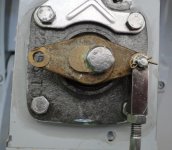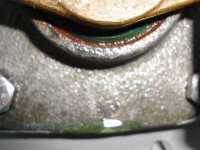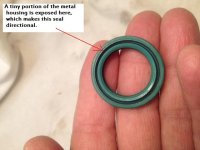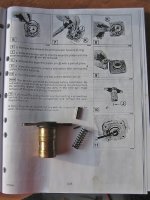We took our new (new to us) 1992 Excel 20SL out for it's maiden voyage this weekend and had a great time and it ran beautifully.
Unfortunatly the fun ended when I got home and parked it and later found a small puddle of lube under the outdrive. When I lowered the drive and took the front shifter cover off it had a lot of lube inside and it was running down the leg when it was up.
I'ts a Volvo Penta SP C drive. I pulled the dipstick in the top and it was way over full so I thought oh no- got water inside. I pulled the drain plug and to my relief it was clear with no signs of water mixing. I had changed the lube a couple weeks ago so maybe I overfilled.
I drained the fluid to the proper level, cleaned everythinng off real well and ran it on the muffs and watched for leaks- especially the shift shaft seal. I never saw a leak and it hasn't leaked at all since then.
The oil under the cover had to come from some where so I'm still concerned- what should I do next?
Unfortunatly the fun ended when I got home and parked it and later found a small puddle of lube under the outdrive. When I lowered the drive and took the front shifter cover off it had a lot of lube inside and it was running down the leg when it was up.
I'ts a Volvo Penta SP C drive. I pulled the dipstick in the top and it was way over full so I thought oh no- got water inside. I pulled the drain plug and to my relief it was clear with no signs of water mixing. I had changed the lube a couple weeks ago so maybe I overfilled.
I drained the fluid to the proper level, cleaned everythinng off real well and ran it on the muffs and watched for leaks- especially the shift shaft seal. I never saw a leak and it hasn't leaked at all since then.
The oil under the cover had to come from some where so I'm still concerned- what should I do next?


